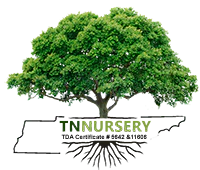Filters
Hummingbird Plants play an essential role in supporting the health and wellness of avian pollinators. More than 60 American types of these birds have received a new status as near-threatened, vulnerable, endangered, or critically endangered. This means growing a variety of native flowering plants is key to creating more food and native habitat.
Bird-friendly flowers from TN Nursery were specifically selected for their color, scent, and longevity. Offering dozens of flower species and grade-A stock, we supply thousands of Americans with critical pollinator flowers.
Reasons For Growing Hummingbird Plants
You already know that the flowers can attract beautiful pollinators to your backyard. But did you know these flowers play an even more important ecological role? It's more than just food for them to eat.
There Are many Reasons To Grow Them
Promoting propagation: They pollinate a variety of flowers and ensure a successful backyard growing season. They also feast on problematic pests like ants, beetles, weevils, and mosquitoes.
Attract other pollinators: Many hummingbird-friendly flowers attract other pollinators like bees, moths, and flies. By working together to spread pollen from flower to flower, they can help to ensure a more verdant backyard space.
Create bio-diverse habitat: The more diverse your outdoor space is, the stronger and healthier your micro-habitat will be. Bio-diverse flowers provide shade and shelter, as well as plenty of hiding spaces for creatures of all sizes.
You simply can't go wrong with a bird-friendly flower — it's one of the best ways to bring form and function to the garden.
Popular Ones For Backyard Gardeners
TN Nursery stocks dozens of hummingbird-friendly flowers to help you build a pollinator paradise.
Garden Plants Nursery Loves To Support Wildlife
Some of our most popular flowers for backyard gardeners include:
Trumpet vine, especially for its bright, showy blossoms and 'scent-station' fragrance.
Cardinal flowers add a pop of bright red color to any garden space.
Painted trillium, both for its beautiful colors and for its rich symbolism and folklore.
As always, all these flowers come with our 100% guarantee. You can rest easy knowing you'll see amazing growth in your first year.
Grow them, 100% Guaranteed TN Nursery has spent three generations growing pollinator flowers and has served customers for 64 years with our best. Whether you're looking to purchase a vining flower or a bushy, flowering ornamental, you can find the perfect pollinator flower online with TN Nursery. We've served thousands of customers over the years and would love to welcome you into the TN Nursery family.










